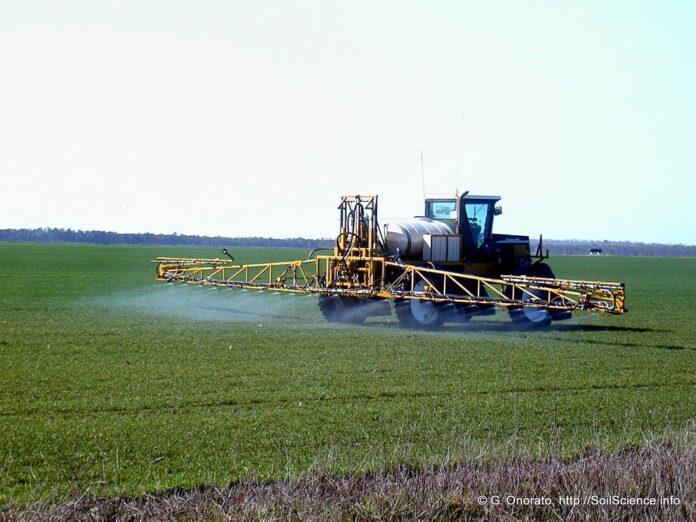BlueWeave Consulting, a leading strategic consulting and market research firm, in its recent study, estimated global agricultural variable rate technology (VRT) market size at USD 7.25 billion in 2022. During the forecast period between 2023 and 2029, BlueWeave expects global agricultural variable rate technology (VRT) market size to grow at a significant CAGR of 12.78% reaching a value of USD 15.63 billion by 2029. Major growth drivers for the global agricultural variable rate technology (VRT) market include an increasing demand for precision farming methods, which require precise application of inputs and rising adoption of advanced agricultural technologies. The market growth is also being fueled by the growing emphasis on maximizing crop yields and optimizing production. VRT solutions offer numerous advantages, including cost savings, environmental sustainability, and improved crop productivity. Technological advancements, such as advanced sensors, satellite imagery, and GPS systems, have greatly enhanced the capabilities of VRT, making it more accurate and effective. As a result, there is a growing demand for VRT in the agriculture sector, as it enables farmers to apply inputs at variable rates based on specific field conditions, ensuring precise and targeted application. These factors are expected to drive the market’s growth in the forecast period. However, small size of landholdings and limited availability of skilled labor and high prices of agriculture VRT equipment are anticipated to restrain the overall market growth.
Global Agricultural Variable Rate Technology (VRT) Market – Overview
Variable Rate Technology (VRT) utilizes various components like mapping, sensing, field monitoring, and equipment integration to enable farmers to optimize their agricultural practices. By adjusting the application of seeds per acre, fertilizer input, herbicide application, and water input based on specific field conditions, rather than using uniform pre-set levels, farmers can reduce costs and enhance yields. The profitability of VRT varies depending on factors such as the crop type, field characteristics, and the technology employed. VRT in agriculture involves closely monitoring crops to prevent issues like drought stress, plant diseases, nutrient imbalances, excessive fertilization, and to ensure the appropriate use of pesticides for healthy crop growth. Vigilant crop health monitoring is crucial for pest and disease management, maintaining optimal water levels and nutrient balance, ultimately leading to maximum yield potential.
Sample Request @https://www.blueweaveconsulting.com/report/agricultural-variable-rate-technology-market/report-sample
Impact of COVID-19 on Global Agricultural Variable Rate Technology (VRT) Market
COVID-19 pandemic had a dual impact on the global agricultural variable rate technology (VRT) market. On the one hand, the pandemic highlighted the importance of technological advancements in agriculture, leading to increased interest in precision farming practices. Farmers are seeking solutions that allow them to optimize input application and reduce costs. It spurred the demand for VRT technologies. On the other hand, the pandemic disrupted global supply chains, resulting in delays in the production and delivery of VRT equipment. Additionally, economic uncertainties led to cautious spending by farmers, potentially affecting investment in VRT. However, the long-term prospects for the market remain positive as the need for sustainable farming practices and efficient resource utilization continues to be a priority.
Global Agricultural Variable Rate Technology (VRT) Market – By Product Type
By product type, the global agricultural variable rate technology (VRT) market is divided into Soil Sensing, Fertilizer VRT, Crop Protection Chemical VRT, Seeding VRT, Yield Monitoring, and Irrigation VRT segments. The fertilizer VRT segment holds the highest share in the global agricultural variable rate technology (VRT) market to promote sustainable development within the agricultural industry. This technology not only improves soil health and crop production but also aids in reducing labor, expenses, and time. By utilizing technology to apply fertilizers based on the specific needs of crops and soil conditions, over-fertilization can be avoided. This is crucial as excessive fertilization can lead to nutrient runoff, which pollutes water systems and harms the environment. On the other hand, soil sensing segment is expected to witness the fastest growth rate during the forecast period. Soil sensing VRT utilizes data from sensors to enable more precise fertilizer application. This technology enhances yield and profitability by continuously collecting data on water content, temperature, nutrient levels, and other factors that influence fertilizer requirements. This data is then used to determine personalized rates tailored to the unique needs of each field at different stages of growth. Moreover, VRT has proven beneficial in the oilseeds and pulses sector by boosting yields and reducing nitrogen pollution. By improving irrigation management, farmers can conserve water resources. In oilseeds and pulses production, fertilizers contribute to the release of nitrous oxide, a potent greenhouse gas. However, with the implementation of variable rate application technologies on equipment like sprayers and spreaders, farmers can apply the precise amount of fertilizer to each area, effectively reducing emissions.
Competitive Landscape
Major players operating in the global agricultural variable rate technology (VRT) market include Deere & Company, Trimble Inc., Topcon Corporation, CNH Industrial N.V., Kubota Corporation, Yara International ASA, Lindsay Corporation, The Climate Corporation, AG Leader Technology, Agjunction, Teejet Technologies, AGCO Corporation, Raven Industries Inc., Sentera LLC, and DICKEY-john Corporation. To further enhance their market share, these companies employ various strategies, including mergers and acquisitions, partnerships, joint ventures, license agreements, and new product launches.
Contact Us:
BlueWeave Consulting & Research Pvt. Ltd
+1 866 658 6826 | +1 425 320 4776 | +44 1865 60 0662












